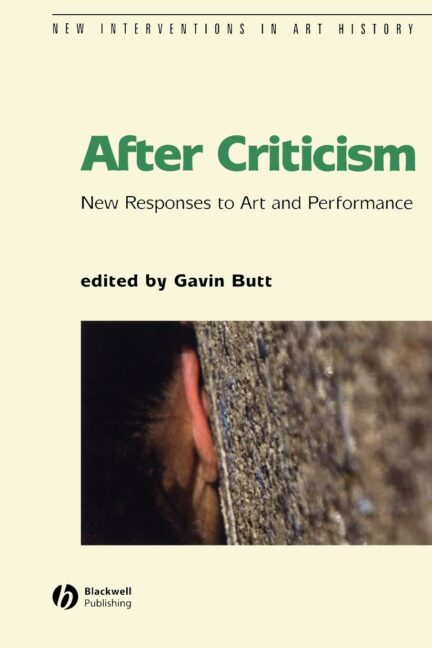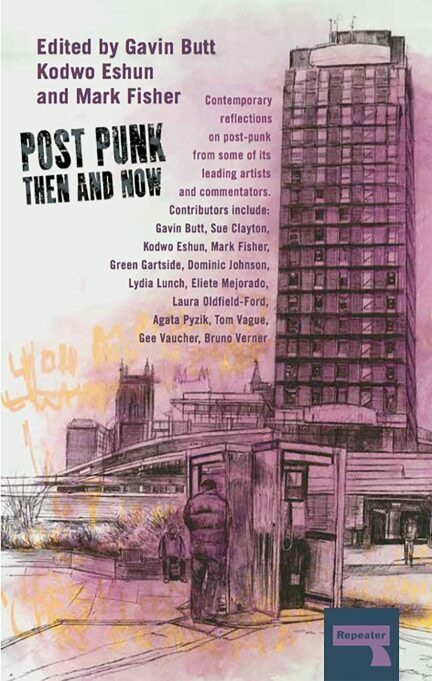Books
No Machos or Pop Stars
When the Leeds art experiment went punk
Published October 2022
American buyers E22MACHO code for 30% off UK and worldwide buyers E22MACHO code for 30% offWinner of the 2024 Historians of British Art Book Award for Exemplary Scholarship on the Contemporary Period
Podcast interview with Dave O’Brien
“Beautifully written and meticulously researched, No Machos or Pop Stars will intrigue anyone with interests in politics, education, art, and popular music. Using a focus on Leeds in the 1970s and 1980s, Gavin Butt brings together theoretical acumen with vivid personal testimony to tell an engrossing tale of power, pedagogy, and dissent. This is a fascinating story of how fine art painters and performers became post-punk and pop pioneers.” — Green Gartside, singer-songwriter, Scritti Politti
After punk’s arrival in 1976, many art students in the northern English city of Leeds traded their paintbrushes for guitars and synthesizers. In bands ranging from Gang of Four, Soft Cell, and Delta 5 to the Mekons, Scritti Politti, and Fad Gadget, these artists-turned-musicians challenged the limits of what was deemed possible in rock and pop music. Taking avant-garde ideas to the record-buying public, they created Situationist antirock and art punk, penned deconstructed pop ditties about Jacques Derrida, and took the aesthetics of collage and shock to dark, brooding electro-dance music.
In No Machos or Pop Stars Gavin Butt tells the fascinating story of the post-punk scene in Leeds, showing how England’s state-funded education policy brought together art students from different social classes to create a fertile ground for musical experimentation.
Drawing on extensive interviews with band members, their associates, and teachers, Butt details the groups who wanted to dismantle both art world and music industry hierarchies by making it possible to dance to their art. Their stories reveal the subversive influence of art school in a regional music scene of lasting international significance.
“With his energetic and fluid writing, vivid and entertaining interviews, and focus on fine art’s relationship to the origins of post-punk, Gavin Butt brings a new and valuable perspective to music’s history. Exciting and original, No Machos or Pop Stars invites us to hear post-punk in a new way.” — Mimi Haddon, author of What Is Post-Punk? Genre and Identity in Avant-Garde Popular Music, 1977–82
“No Machos or Pop Stars is an account of the plethora of post-punk bands that emerged out of the ‘Leeds experiment.’ . . . The range and richness of Butt’s research is evident throughout.” — Peter Suchin, Art Monthly
“Butt is conversant in both music criticism and theory, as he cites everyone from Greil Marcus, Simon Frith, and Mary Harron (back when she was a journalist and not a film director) to Lucy Lippard, Stuart Hall, Julia Kristeva, and Antonio Gramsci with Dick Hebdige in between. But more powerful than his scholarship, and his own voluminous interviewing of those in the scene, is his clear passion. He writes as someone moved by the music, weird, wonderful, and varied, that Leeds spawned.” – George Yatchisin, California Review of Books
“No Machos delves into the music scene in the region in terms of how critical theory and art education had an impact on conceptual approaches to music-making of the time. […] One of the most striking aspects of the book’s historical approach is how Butt zooms in and out of the map of post-war European art, locating Leeds’ particular underground music acts that were connected through an educational freedom offered to them.” – Temmuz Süreyya Gürbüz, Cultural Studies
“Written with both scholarly precision and an evident fan’s enthusiasm, the book is a serious history of popular modernism in West Yorkshire, as well as a social sketch of artists and young people reacting to a collapsing society with a rarely matched intellectual, aesthetic and social application. […] A welcome feature of No Machos —which is sadly unusual in many books related to punk and post-punk — is a contextualisation of the environment that created these scenes.” – Marcus Barnett, Corridor8
“Butt provides a document of bands who created their own version of (post) punk, away from the London-based Svengalis who dominate the narrative. This is a story where the politics of gender, race, and sexuality are foregrounded. The book provides a fascinating insight into how the budding bands built on the collaborative approach championed in the art schools, forming overlapping groups of friends and enabling cross-cultural and social experimentation.” – Rebecca Binns, Historical Studies in Education
“No Machos or Pop Stars is a highly engaging book about the late 1970s post-punk scene in Leeds. Groups such as Gang of Four, Mekons, Scritti Politti, Delta 5, Fad Gadget and Soft Cell emerged from this richly diverse place and period. The author does a thorough examination of both the upsides, and downsides, of art schools in the UK. This unique project is both a celebration and a critique. Butt draws on a number of interesting and illuminating interviews (musicians, professors, etc.) and manages to come up with a book that is fun, informative and thought-provoking in equal measures.” – Jim Dooley (author of Red Set: A History of Gang of Four)
“As someone who was a student at Leeds University during this period and was acquainted with many of the people discussed here, I was impressed with the detailed research Gavin Butt had put into his book as well as by his handling of the larger historical, political and theoretical currents that shaped many of the artists involved and their work. It was a tumultuous, creative period with a large cast of characters at the various educational institutions involved and outside them, all brought to vivid life here, but the book does not neglect the city of Leeds itself or its people and how they influenced the bands it considers and their music. However, you needn’t have been there to enjoy this significant study of an important cultural moment and I can’t recommend it too highly.” – Ian Duhig, poet
“The dive into primary sources is impressive. The author conducted dozens of interviews over six years, including two with Andy Gill, the influential Gang of Four guitarist who died before the book’s publication. […] This work is borne out by the copious photos of musicians and events and other ephemera that predated their wider, more heavily documented fame.” – Marci Cohen, Music Library Association
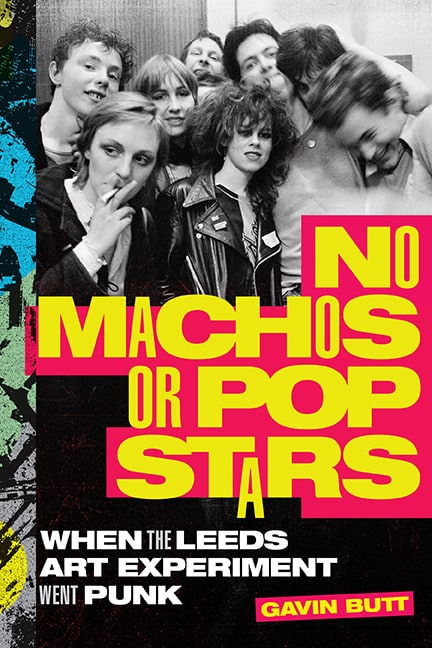
The Queer Commons
A themed issue of GLQ
Edited by Gavin Butt and Nadja Millner-Larsen
Published October 2018
Duke University Press Buy from bookshop.orgThe conventional idea of the commons – a resource managed by the community that uses it – might appear anachronistic as global capitalism attempts to privatize and commodify social life. Against these trends, contemporary queer energies have been directed toward commons-forming initiatives from activist provision of social services to the maintenance of networks around queer art, protest, public sex, and bar cultures that sustain queer lives otherwise marginalized by heteronormative society and mainstream LGBTQ politics. This issue forges a connection between the common and the queer, asking how the category “queer” might open up a discourse that has emerged as one of the most important challenges to contemporary neoliberalization at both the theoretical and practical level.
Contributors look to radical networks of care, sex, and activism present within diverse queer communities including HIV/AIDS organizing, the Wages for Housework movement, New York’s Clit Club community, and trans/queer collectives in San Francisco. The issue also includes a dossier of shorter contributions that offer speculative provocations about the radicalism of queer commonality across time and space, from Gezi Park uprisings in Turkey to future visions of collectivity outside of the internet.
Contributors Arlen Austin, Zach Blas, Gavin Butt, Beth Capper, Ashon Crawley, Amalle Dublon, Macarena Gomez-Barris, Christina Hanhardt, Diarmuid Hester, Nadja Millner-Larsen, Jose Esteban Munoz, Cenk Ozbay, Evren Savci, Eric Stanley
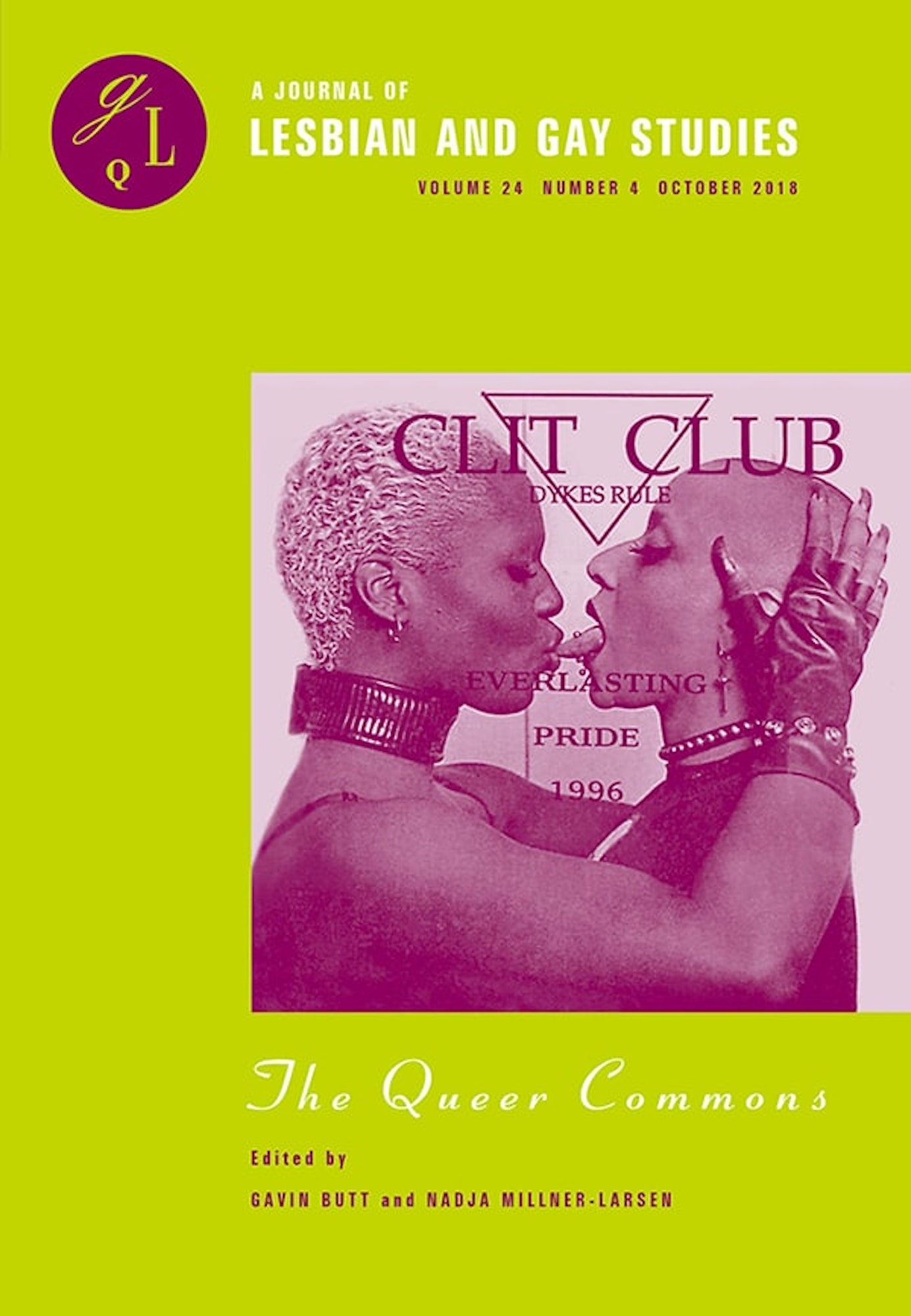
Post-Punk Then and Now
Edited by Gavin Butt with Kodwo Eshun and Mark Fisher
Published September 2016
Repeater Books Buy from bookshop.orgWhat were the conditions of possibility for art and music-making before the era of neoliberal capitalism? What role did punk play in turning artists to experiment with popular music in the late 1970s and early 1980s? And why does the art and music of these times seem so newly pertinent to our political present, despite the seeming remoteness of its historical moment?
Focusing upon the production of post-punk art, film, music, and publishing, Post-Punk Then and Now offers new perspectives on an overlooked period of cultural activity, and probes the lessons that might be learnt from history for artists and musicians working under 21st century conditions of austerity. Contemporary reflections by those who shaped avant-garde and contestatory culture in the UK, US, Brazil and Poland in the 1970s and 1980s. Alongside these are contributions by contemporary artists, curators and scholars that provide critical perspectives on post-punk then, and its generative relation to the aesthetics and politics of cultural production today.
Contributors: Sue Clayton, Green Gartside, Dominic Johnson, Lydia Lunch, Eliete Mejorado, Laura Oldfield Ford, Agata Pyzik, Tom Vague, Gee Vaucher and Bruno Verner.
“Being in a band during the first pulse of post-punk was a potent ‘world-making’ endeavour, a ‘strategic move to escape the entropic pull of 70s culture and society.’ The book rightly identifies the allure of the band paradigm for people who were not prepared to ‘choose life’ in the standard 9 to 5 format.” – Guy Mankowski, 3:AM magazine
“In using the term ‘Being in a Band’, Gavin Butt is alluding to several overlapping concerns, especially to the benefits gained through the collaborative process itself, irrespective of the medium involved. The phrase also connects with notions of the commons, of shared – as opposed to privately owned – resources, a far cry from what Terry Atkinson has called the ‘monad-like’, self-determined avant-garde artist.” – Peter Suchin, Art Monthly
Seriousness
Gavin Butt with Irit Rogoff
Published September 2013
MIT Press Buy from bookshop.orgThe contemporary art world has become more inhospitable to “serious” intellectual activity in recent years. Critical discourse has been increasingly instrumentalized in the service of neoliberal art markets and institutions, and artists are pressurized by the demands of popularity and funding bodies. Set against this context, Gavin Butt and Irit Rogoff raise the question of “seriousness” in art and culture. What is seriousness exactly, and where does it reside? Is it a desirable value in contemporary culture? Or is it bound up with elite class and institutional cultures? Butt and Rogoff reflect on such questions through historical and theoretical lenses, and explore whether or not it might be possible to pursue knowledge and value in contemporary culture without recourse to high-brow gravitas. Can certain art forms—such as performance art—suggest ways in which we might be intelligent without being serious? And can one be serious in the art world without returning to established assumptions about the high-mindedness of the public intellectual?
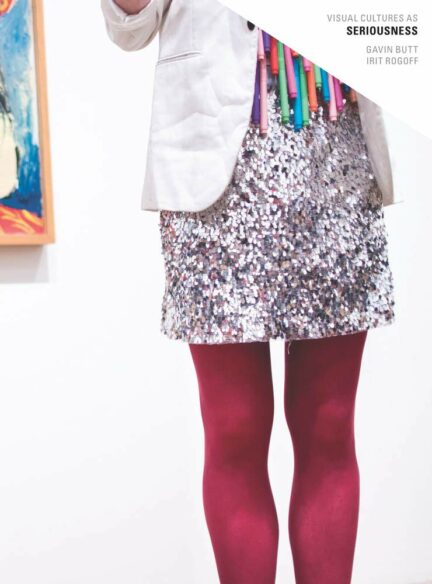
Performing / Knowing
Edited by Gavin Butt
Published January 2010
This publication comprises documentation of four performance lectures which collectively formed an event Performing / Knowing held at the Whitechapel Art Gallery, London in June 2009. Organised by Gavin, this edited volume includes a preface by him and the following contributions:
‘Intangibles’ by Hugo Glendinning, Adrian Heathfield and Tim Etchells
‘Hovering Words’ by Kate Love
‘The Collapsing Lecture’ by Aaron Williamson
‘Shabbtai Zevi: Scrap book for a Future Performance’ by Oreet Ashery.
The book was published by Article Press, Birmingham Institute of Art and Design.
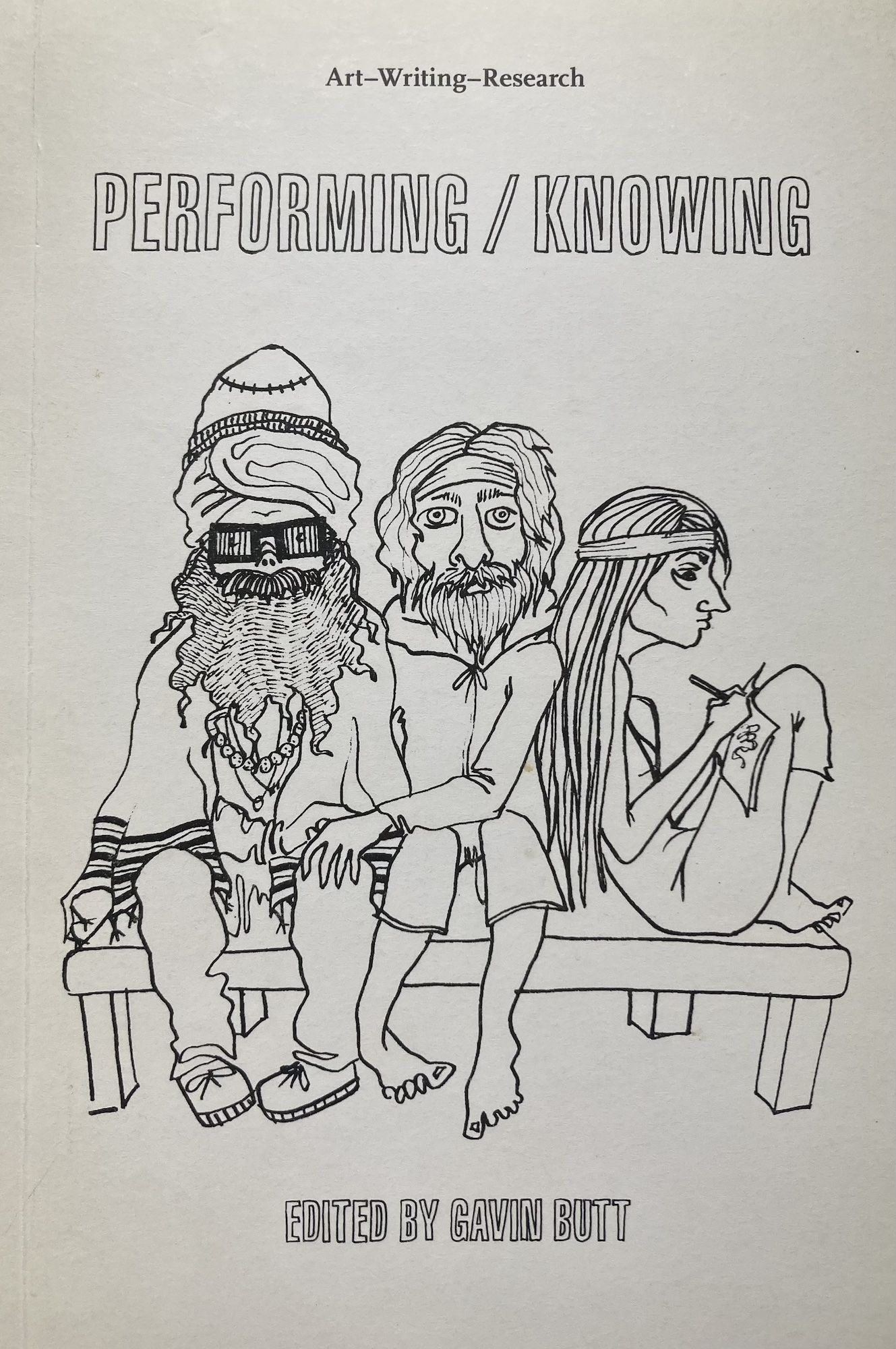
Between You and Me
Queer Disclosures in the New York Art World 1948-1963
Published January 2005
Duke University Press Combined Academic PublishersIn the decades preceding the Stonewall riots—in the wake of the 1948 publication of Alfred Kinsey’s controversial report on male sexuality and in the midst of a cold war culture of suspicion and paranoia—discussions of homosexuality within the New York art world necessarily circulated via gossip and rumor. Between You and Me explores this informal, everyday talk and how it shaped artists’ lives, their work, and its reception. Revealing the “trivial” and “unserious” aspects of the postwar art scene as key to understanding queer subjectivity, Gavin Butt argues for a richer, more expansive concept of historical evidence, one that supplements the verifiable facts of traditional historical narrative with the gossipy fictions of sexual curiosity.
Focusing on the period from 1948 to 1963, Butt draws on the accusations and denials of homosexuality that appeared in the popular press, on early homophile publications such as One and the Mattachine Review, and on biographies, autobiographies, and interviews. In a stunning exposition of Larry Rivers’s work, he shows how Rivers incorporated gossip into his paintings, just as his friend and lover Frank O’Hara worked it into his poetry. He describes how the stories about Andy Warhol being too “swish” to be taken seriously as an artist changed following his breakthrough success, reconstructing him as an asexual dandy. Butt also speculates on the meanings surrounding a MoMA curator’s refusal in 1958 to buy Jasper Johns’s Target with Plaster Casts on the grounds that it was too scandalous for the museum to acquire. Between You and Me sheds new light on a pivotal moment in American cultural production as it signals new directions for art history.
“Between You and Me is a brilliant read that flirtatiously winks and kisses its way through the New York art world of the postwar period, turning our favorite icons inside out and back in again. Taking gossip into his own mouthy hands, Butt slurs the studios of Rivers, Jasper Johns, and Andy Warhol with their own reckless talk: kisses turn into smacks, and winks into home runs. (Between you and me, that’s how I like it.)” – Carol Mavor, author of Reading Boyishly and Black and Blue
“Addressing gossip as a Derridean supplement to standard forms of historical evidence, Butt aims to queer the writing of history. He does a provocative job, largely by confronting authoritative knowledge with its unverifiable counterparts.” – Frazer Ward, GLQ
“Between You and Me is boldly original and beautifully written. Gavin Butt renders a rich (which is to say dishy) description of a queer past that might enable us to imagine a queer futurity. His book will stand as a lasting contribution to queer theory and visual cultural studies and, perhaps more importantly, serve as a political and methodological wake-up call to the discourse of art history.” — José Esteban Muñoz, author of Cruising Utopia: The Then and There of Queer Futurity
“Easily accessible to art historians and non-scholars alike, Between You and Me’s performative interpretations of artistic and sexual identities through biographic remembrances and iconographic interrogations of art objects and gallery installations trouble the stability of verbal and visual evidence, critically examining the nature of what we consider to be useful evidence while expanding the term to include innuendo, rumor, and imprecise visual cues. Butt flirts with impropriety here, taking obvious personal and scholarly pleasure in writing an account of mid-twentieth-century gossip that aggressively queers traditional art historical practice, forcing us to reconsider the ways in which we narrate history.” — Stefanie Snider, CLGH Newsletter
“Gossip, [Butt] notes, is conventionally thought to be slight because it is not serious.… Butt shows how much you can learn about recent American art by looking at the gossip associated with it.” — David Carrier, artUS
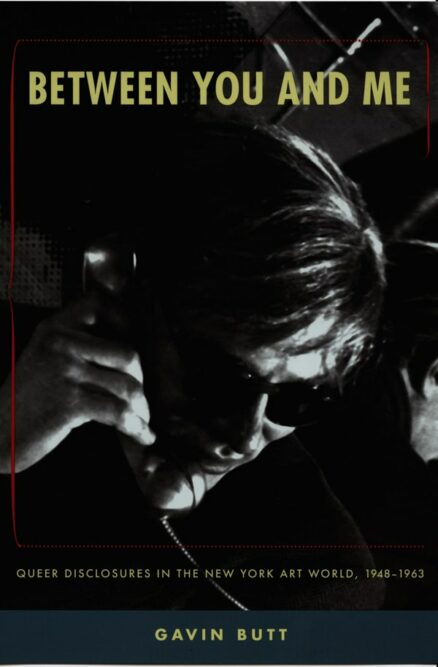
After Criticism
New Responses to Art and Performance
Edited by Gavin Butt
Published June 2004
Blackwell Publishing Buy from bookshop.orgIt has recently become apparent that criticism has fallen on hard times. Either commodification is deemed to have killed it off, or it has become institutionally routine. This book explores contemporary approaches which have sought to renew criticism’s energies in the wake of a ‘theatrical turn’ in recent visual arts practice, and the emergence of a ‘performative’ arts writing over the past decade or so.
Issues addressed include the ‘performing’ of art’s histories; the consequences for criticism of embracing boredom, distraction and other ‘queer’ forms of (in)attention; and the importance of exploring writerly process in responding to aesthetic experience. Bringing together newly commissioned work from the fields of art history, performance studies, and visual culture with the writings of contemporary artists, After Criticism provides a set of experimental essays which demonstrate how ‘the critical’ might live on as a vital and efficacious force within contemporary culture.
Contributors: Jane Blocker, Jennifer Doyle, Matthew Goulish, Kate Love, José Esteban Muñoz, Niru Ratnam, Irit Rogoff, Rebecca Schneider and John Seth.
“Though it seems contradictory to write words of praise for a book that deeply interrogates the marketability of praiseful language (in the guise of art criticism), Gavin Butt’s collection deserves them. Framed by Butt’s astute introduction, these performative essays pulse with vitality. Food for thought, this book makes us think, again, about art and its interpretations in a new way. Critical writing as a kind of performance – delicious.” – Amelia Jones, author of Body Art: Performing the Subject
“This anthology is an excellent overview of performative critical discourse edited and introduced by one of its leading proponents. All the contributions have an experimental or improvisational edge that preserves a sense of the critical encounter. The book is at the cutting edge of art theory and will be read with enthusiasm by a large number of people engaged with contemporary art practice and criticism.” – Margaret Iversen, author of Photography, Trace and Trauma
“After Criticism is crucial to any discussion regarding the status of criticism and critical theory after post-structuralism and, equally importantly, is one of few texts that is innovative in its illumination of context, history, aesthetic judgement and, rare for an academic text, enjoyable to read.” – Amna Malik, Art Monthly
